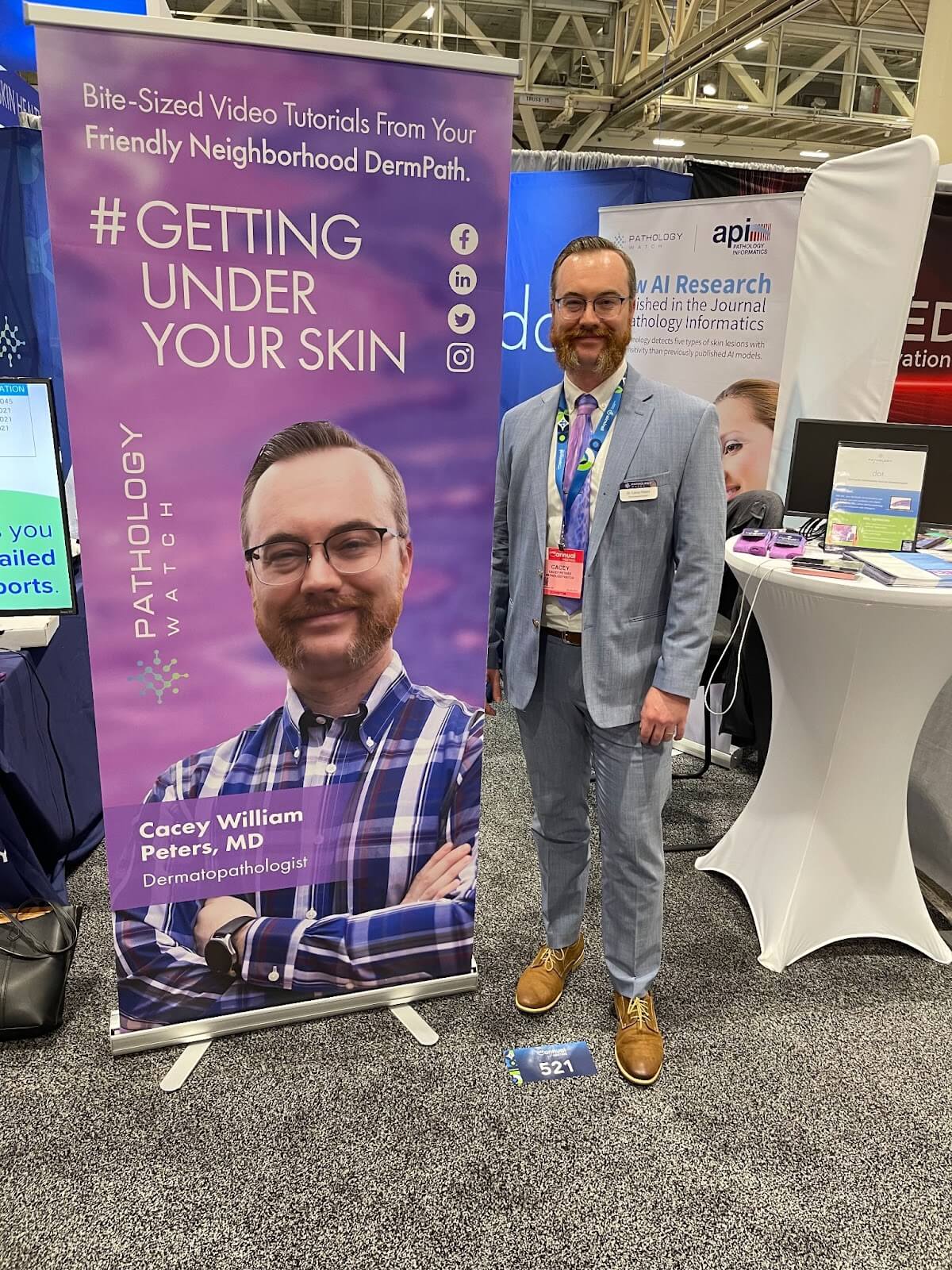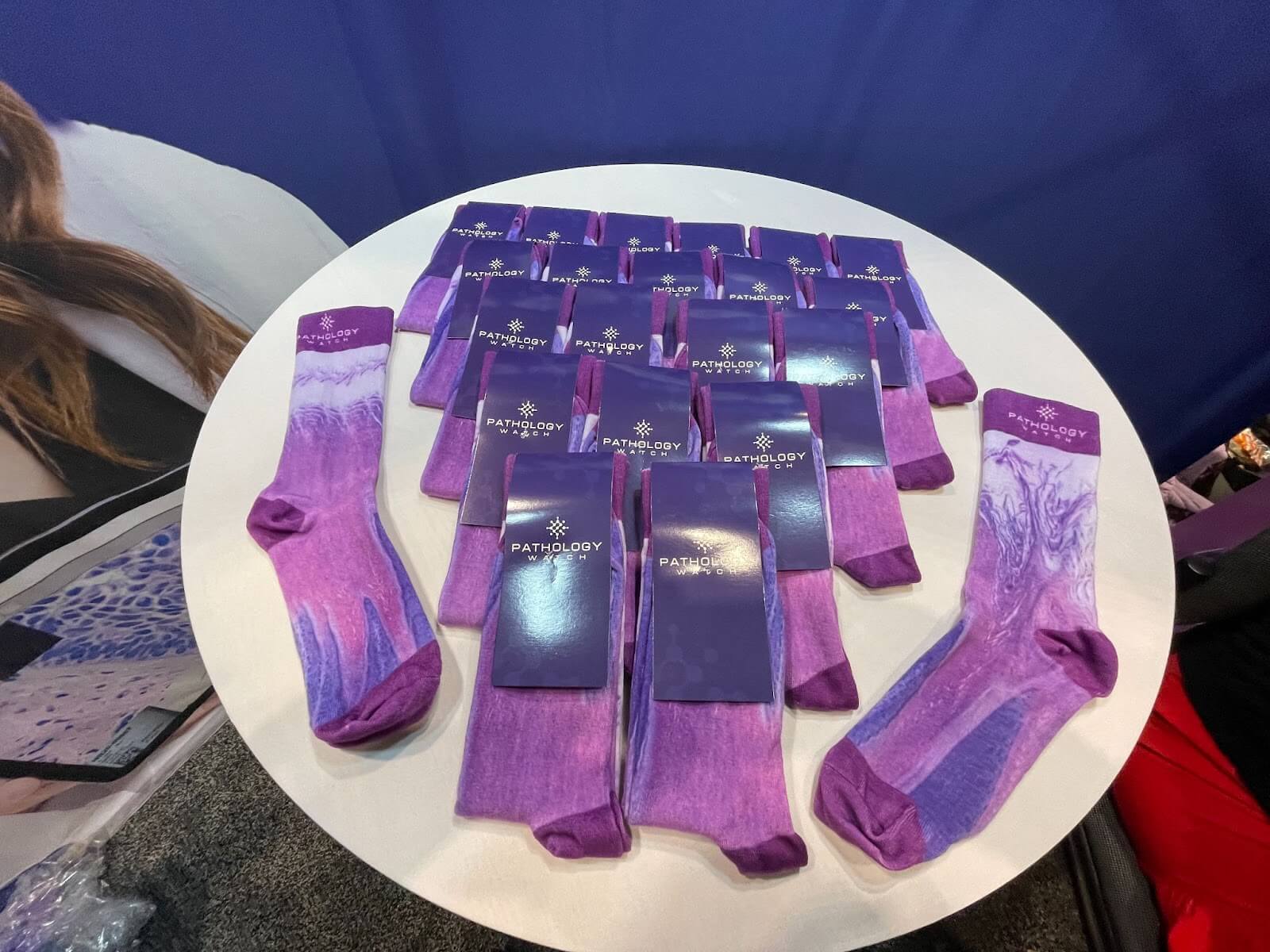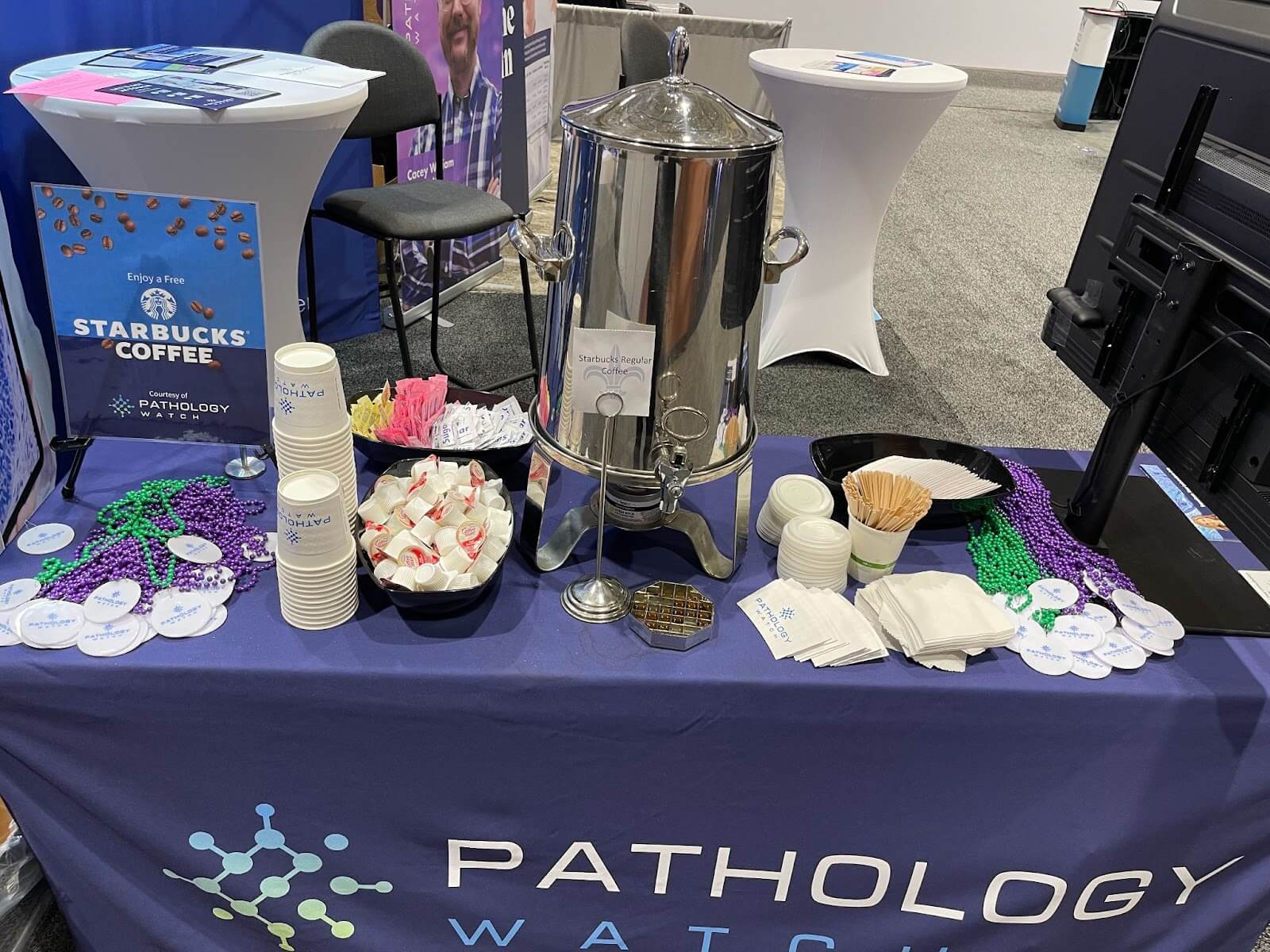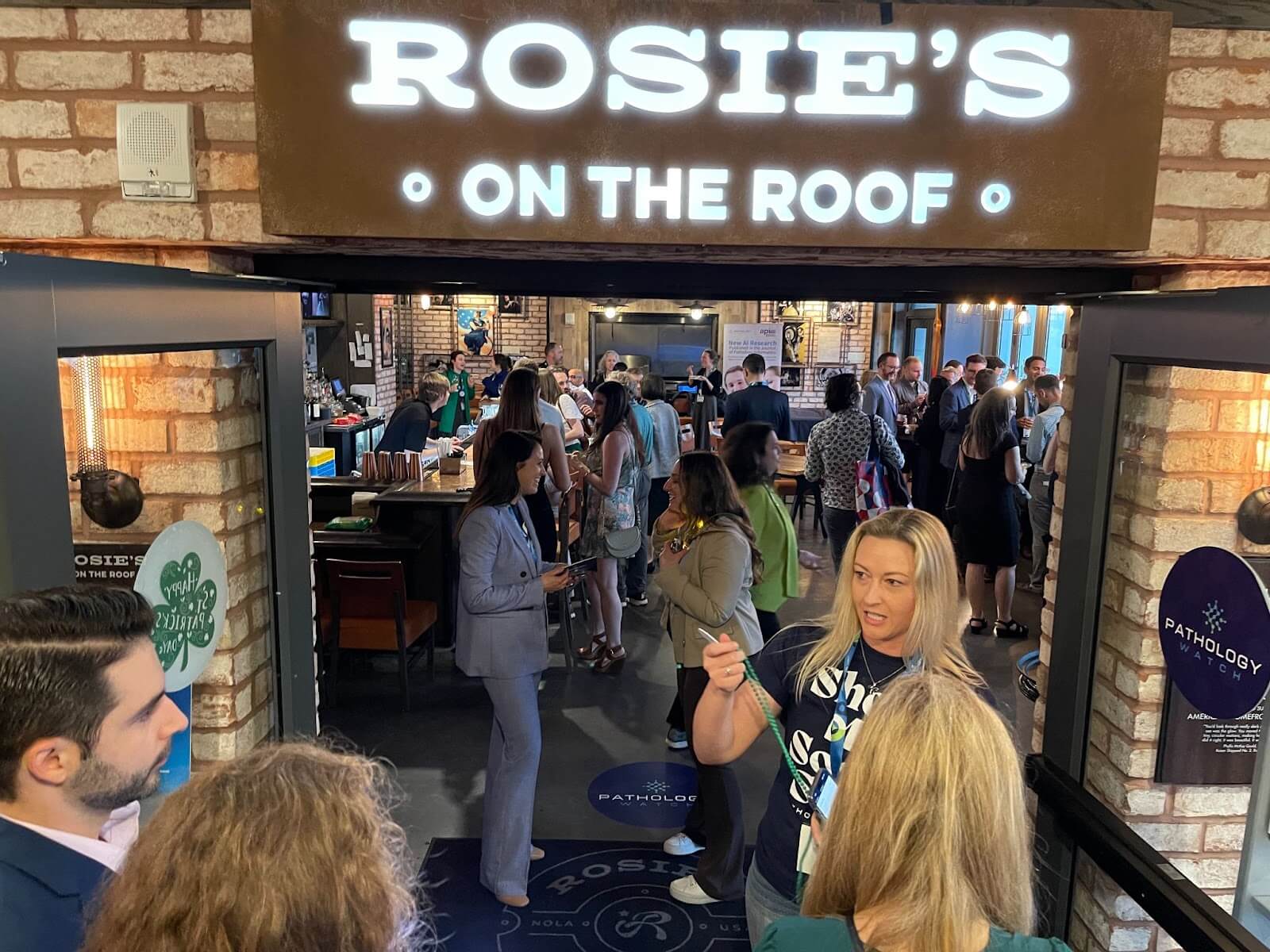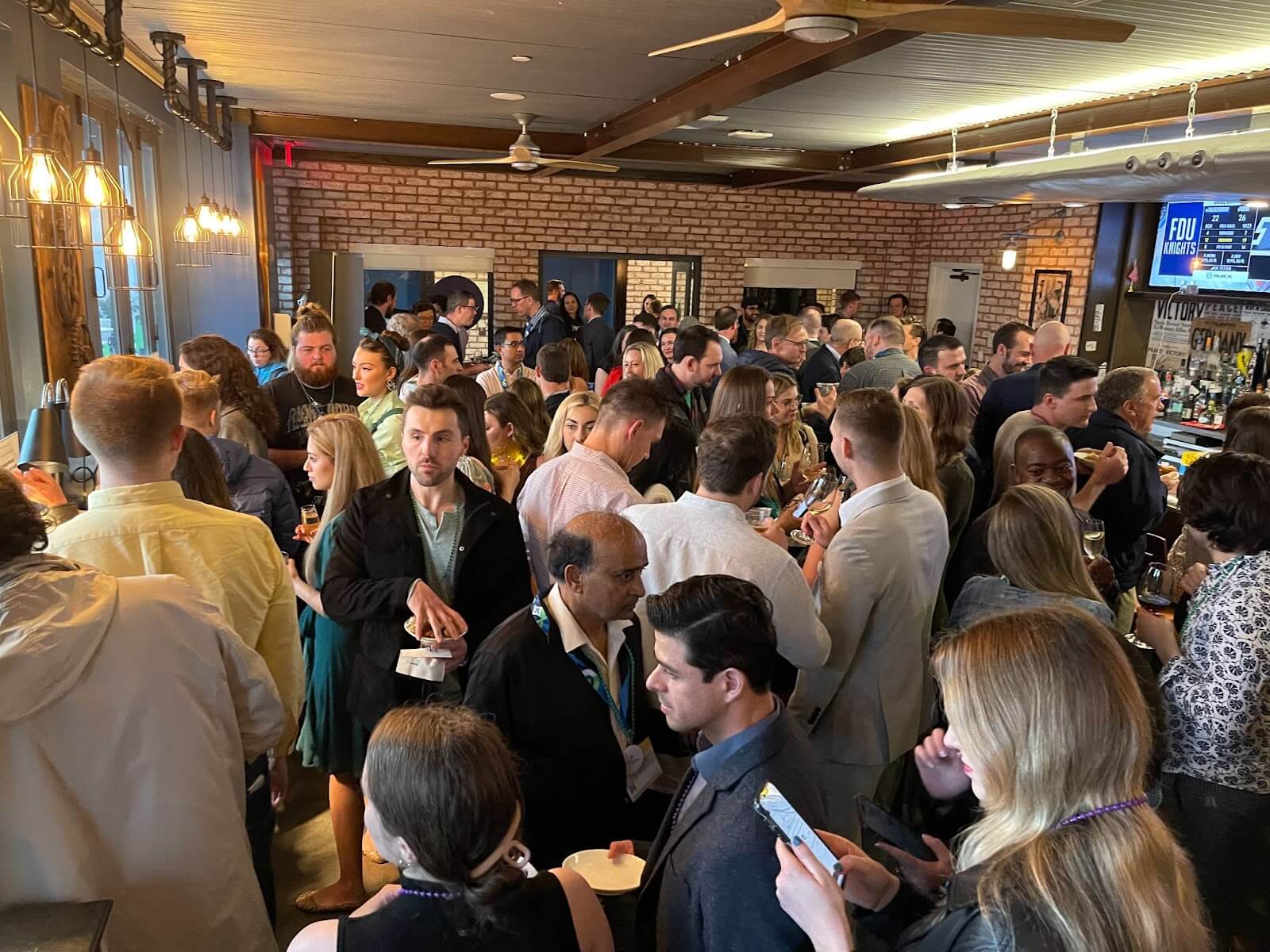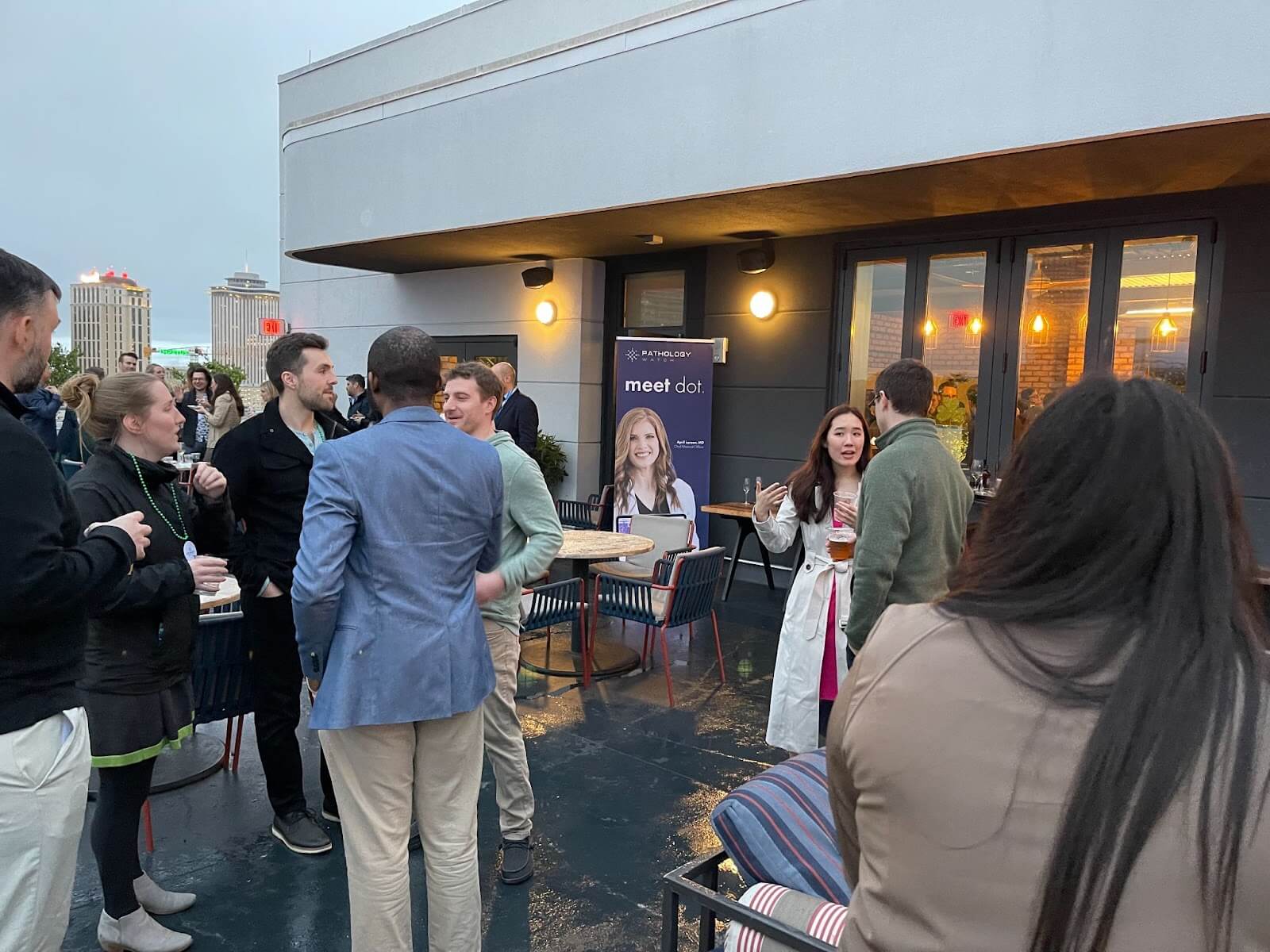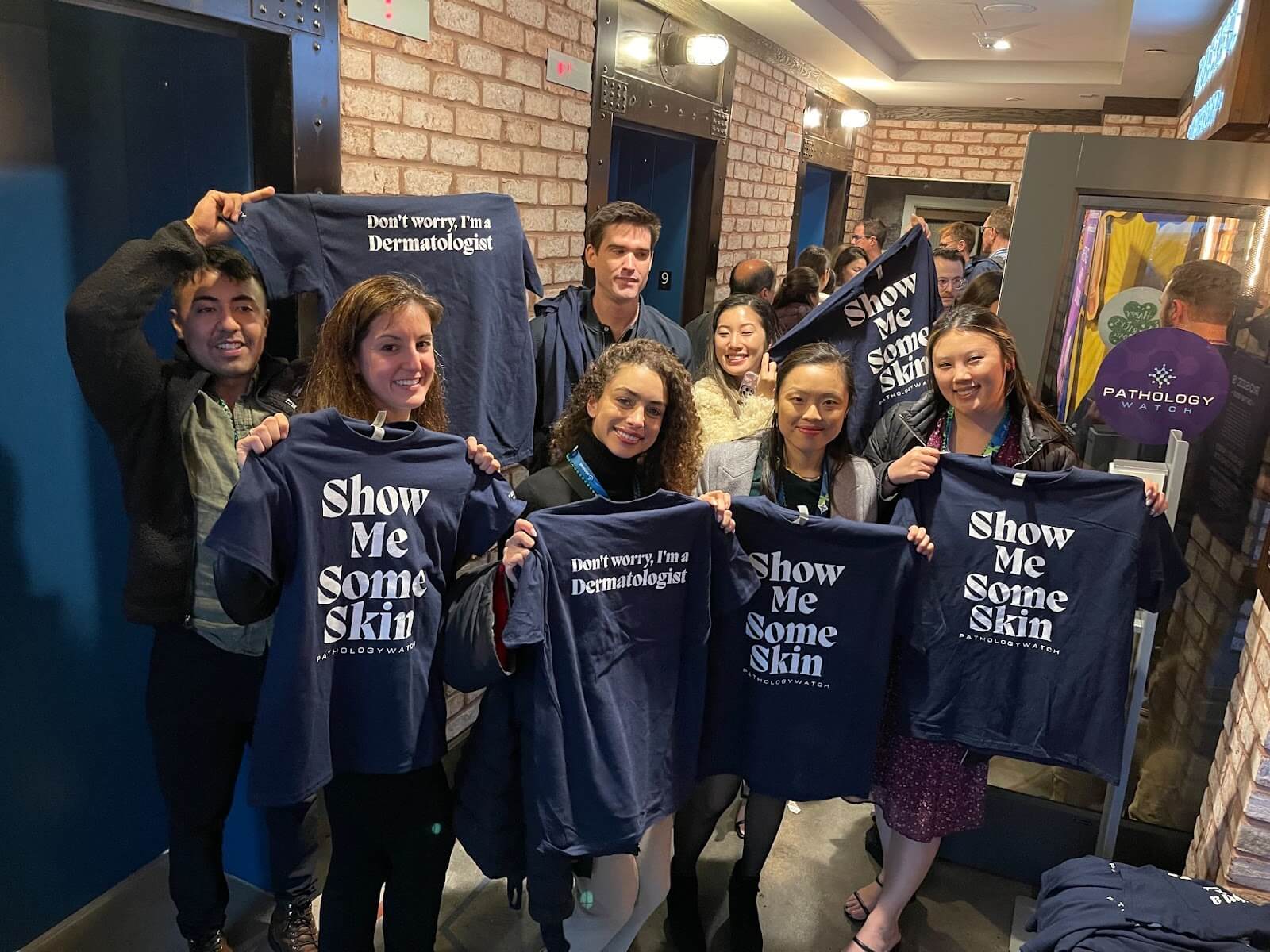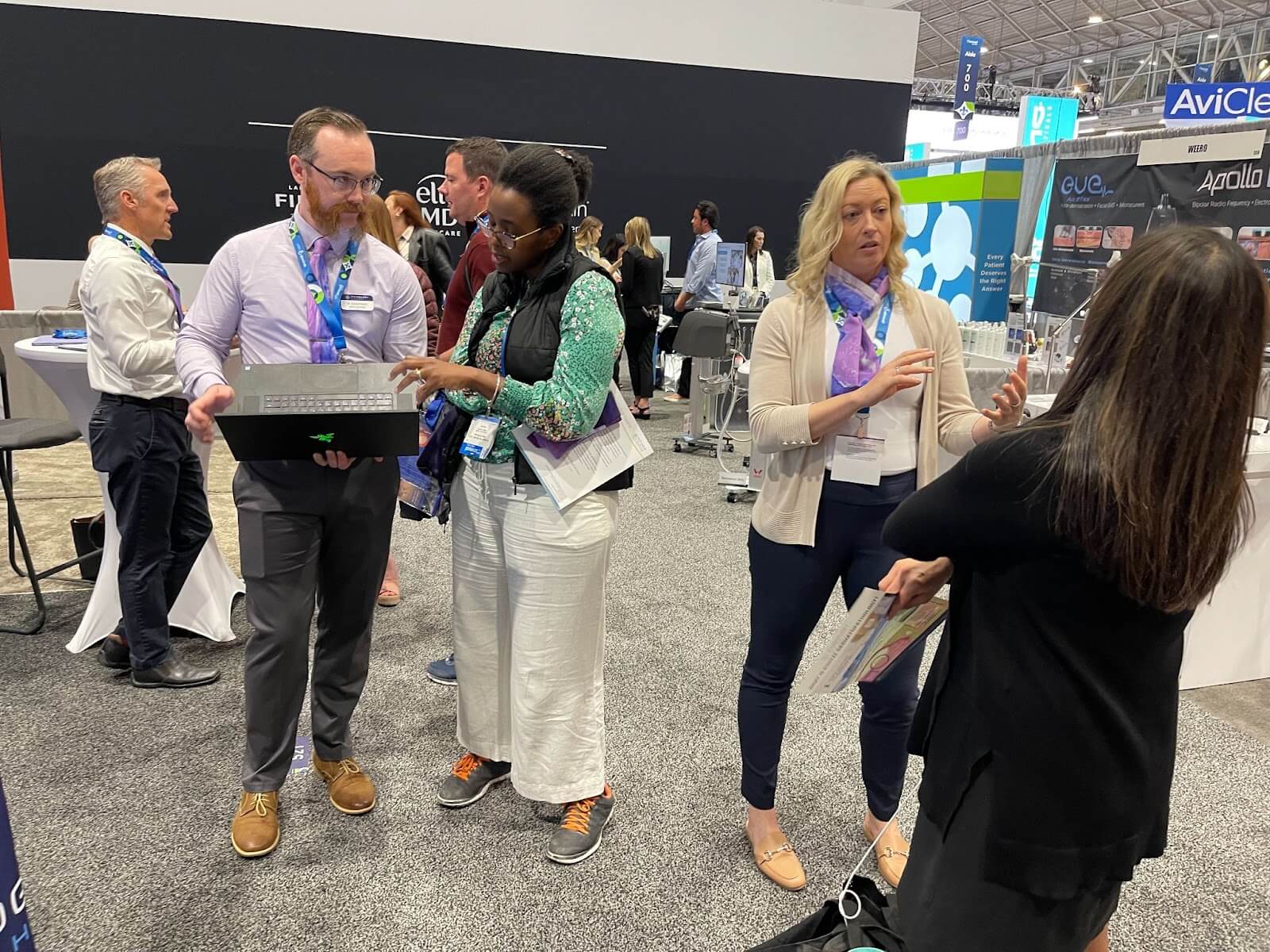Apr 25, 2023 | Meet The Team, Pathology Business
PathologyWatch COO Scott Mattivi was honored this month with the Meritorious Achievement Award from Pittsburg State University. The award is the highest honor based on career achievement bestowed by the university’s alumni association.
Mattivi graduated from the university, located in Pittsburg, Kansas, with a bachelor of science degree in biology in 1985 before earning a degree in medical technology from the University of Kansas in 1987.
“No matter where your career path eventually takes you, I think most people retain a soft spot for their alma mater, and that’s certainly the case for me,” says Mattivi. “To be recognized by Pittsburg State is truly an honor. My lifelong interest in science and healthcare was fostered there, and my education and association with Pittsburg State have definitely served me well in my career.”
In May of 2022, Mattivi joined PathologyWatch, which specializes in working with dermatology practices to manage their pathology workflows using a digital model. Mattivi brings strategic leadership and operational oversight to PathologyWatch’s three laboratories, which are located in Salt Lake City, UT, Phoenix, AZ, and Port Charlotte, FL.
Before arriving at PathologyWatch, Mattivi was president of Eurofins-Viracor BioPharma Services, where he worked for more than 13 years. Previous to that, he served as a laboratory manager at Quest Diagnostics for 22 years. Mattivi has earned his Six Sigma Green Belt Certification to ensure the highest quality of processes and services and serves on five different boards in the healthcare industry.
Along the way, Mattivi started programs with clinical lab students at the University of Kansas and Wichita State University to perform molecular science rotations at Viracor. He has been an advocate in sharing the virtues of seeking a career in clinical laboratory sciences with students at multiple regional educational institutions.
In addition to his Pittsburg State award, Mattivi will be honored later this year by the alumni association at the University of Kansas, where he will be recognized on October 6–7 as a distinguished health professions alumnus.
Mar 21, 2023 | Digital Dermatopathology, Digital Pathology, Meet The Team, Pathology Business
We had a wonderful time at AAD’s annual conference held last weekend in New Orleans. With 8,500 health care professionals and over 16,000 total registrants, The Big Easy was bustling with the latest in pathology resources and expertise.
Here are a few of the highlights from the PathologyWatch team:
This year’s booth enjoyed a vibrant stream of dermatologists who were interested in learning about dot., the dermpath virtual assistant that helps derms to manage case workloads, view digital images and case files, create detailed pathology reports, and collaborate with colleagues.
Dr. Cacey Peters was on hand to demonstrate how dot. makes reviewing and annotating digital slides a snap for Derms and DermPaths. He also met with more than a few starstruck fans of his popular #GettingUnderYourSkin social media videos.
Though it isn’t polite to brag, we put our best foot forward by producing the show’s most memorable swag: custom socks featuring verruca vulgaris histology. That’s right, we gave warts to hundreds of happy derms.
In addition, a hot pot of Starbucks coffee is just what the doctors ordered to stay alert and keep their eyes on the prize.
Friday evening we hosted our infamous annual AAD happy hour at Rosie’s On The Roof, which is located on top of the historic Higgins Hotel. Hundreds of Derms braved stormy conditions to join us for a classic fais do-do with bottomless hors d’oeuvres and drinks.
Falling on St. Patrick’s Day, the place was packed with festive pathologists looking to let off a little steam and socialize between conference sessions.
The patio’s city views offered the perfect location to reunite with familiar faces and make new friends.
At the end of the night, we gave away special edition “Show Me Some Skin” T-shirts, with the words “Don’t Worry, I’m a Dermatologist” emblazoned on the back. Based on the frenzy they created, the shirts will definitely be returning for AAD in San Diego 2024.
We also handed out custom Mardi Gras beads to get everyone in the spirit of the city’s rich traditions.
Looking back at our experience in New Orleans, we couldn’t be happier to be a part of this inspiring community. It was a joy to meet, answer questions, and share our vision with so many talented Derms.
2023 promises to be a herald year for PathologyWatch, our customers and partners as we continue making great strides in the development of technology and workflows that enhance patient outcomes.
Nov 18, 2022 | Digital Dermatopathology, Meet The Team
A noted dermatopathologist, Dr. Willman joins the PathologyWatch team to continue delivering the highest-quality care to patients.
PathologyWatch, a full-service digital dermatopathology solution, welcomes Dr. Joseph Willman, MD, to its team of respected pathologists. Dr. Willman, a dermatopathologist with over two decades of experience, will utilize state-of-the-art digital pathology workflows to deliver optimal patient care to dermatology clinics.
A board-certified pathologist and dermatopathologist, Dr. Willman completed his residency at the University of Utah, his dermatopathology fellowship at the University of Colorado, and his molecular genetic pathology fellowship at the University of Michigan.
Dr. Willman’s connection to pathology began long before his career and training. His father was a pathologist, introducing him to the profession at a young age. Still, he expected to follow a different career path. As a student, he spent time working in emergency rooms and found surgery and internal medicine interesting. However, his third-year medical school pathology rotation cemented his interest in pathology, and he now sees digital pathology as the future of the field.
“I think the majority of anatomic pathology will be done digitally, as technology advances to digitize the slides, because it makes it so easy to collaborate, get opinions on cases and implement quality measures to get multiple people reviewing a single case,” Dr. Willman said. “It’s so much more convenient than shipping or using a courier to share glass slides, which is easily a 48-hour process by itself. PathologyWatch can secure expert opinions from people all over the country in a single afternoon, and that’s revolutionary.”
With 20 years of experience in dermatopathology, Dr. Willman brings extensive expertise to PathologyWatch. Most recently, he served as the director of a national reference laboratory and molecular diagnostics lab, where he worked extensively with quality systems and compliance and regulation. His experience and interest in lab operations will help as PathologyWatch builds a digital laboratory platform incorporating quality measures that aren’t possible in a physical laboratory.
“We are thrilled to have Dr. Willman joining our team, not just for the years of experience he has but also for his enthusiasm for the future and commitment to progress and innovation,” said Dan Lambert, CEO at PathologyWatch. “He will be of particular help in moving our molecular efforts forward.”
Nov 5, 2021 | Digital Dermatopathology, Meet The Team
Dr. George brings years of dermatopathology experience to the firm, with a special focus on melanoma.
Salt Lake City, November 4, 2021—PathologyWatch, a full-service digital pathology service, is pleased to welcome Dr. Eva Vertes George, MD, to its clinical team. A highly qualified and respected dermatopathologist, Dr. George’s expertise in melanoma, autoimmune conditions and inflammatory skin conditions aligns with PathologyWatch’s goals to support the most comprehensive and best-quality patient care while reducing healthcare costs.
“We are impressed with the enthusiasm and depth of expertise that Dr. George brings to the people of Florida and all over the United States,” says Dan Lambert, cofounder and chief executive officer of PathologyWatch.
Dr. George completed her residency in anatomic and clinical pathology at the University of Florida. Her fellowship was in dermatopathology at the University of Florida, and she is US-board certified in anatomic and clinical pathology and dermatopathology.
Although she enjoys all aspects of clinical pathology, her focus is melanoma. “I love it all, but I would say the part that grabs me is melanoma. There’s still so much that we don’t know about them. As we continue understanding the different variants, it’s about making sure we get the correct diagnosis so that patients receive the best care possible.”
As a strong supporter of digital pathology, Dr. George was drawn to PathologyWatch in part because of its commitment to opening up access to qualified patient care to the international community. “The idea that a biopsy can be done anywhere in the world, digitized, and then read by a pathologist from a different place in the world is very exciting. The possibilities are endless with that kind of instant accessibility,” said Dr. George.
“One of the most valuable parts of digital pathology is that it is going to enhance the accuracy of the diagnosis in a timely manner. It enables the transfer of information more readily and then extends that service to rural areas,” said Dr. George. “I truly believe digital pathology is the future.”
For more information, please email [email protected] or visit us at pathologywatch.com.
About PathologyWatch
PathologyWatch is the groundbreaking leader of digital dermatopathology services. Through these services, dermatology clinics, hospitals and laboratories can improve operational efficiency by speeding up workflow and enhancing patient outcomes by utilizing the PathologyWatch expert professional team and laboratory services. This can facilitate best-in-class reads and, in some cases, enable additional revenue to the practice by in-housing pathology. With an intuitive and easy-to-implement digital pathology solution that includes access to top-tier dermatopathologists and a streamlined clinical workflow that interfaces directly into the EMR, PathologyWatch brilliantly combines state-of-the-art technology and clinical decision-making to deliver unprecedented patient care.
Jun 29, 2020 | Digital Pathology, Meet The Team
April Larson received her medical degree from the University of Utah and completed a research fellowship at the Tom C. Mathews Familial Melanoma Research Clinic at the Huntsman Cancer Institute. Since completing a dermatology residency at Dartmouth-Hitchcock Medical Center over ten years ago, she has devoted herself to patient care. April, who is currently director of the clinical advisory board and clinical implementation at PathologyWatch, always had a desire to pursue medicine; both her father and older brother are plastic surgeons. While she was itching for a career in medicine, her first choice was family practice. It wasn’t until she met an intern during her first rotation in her third year of medical school that she changed her mind about dermatology—and the connection was instantaneous.
Can you describe that defining moment when you knew dermatology was the right choice?
I heard a lecture by Sancy Leachman, MD, PhD—this charismatic, amazing physician-scientist—as she described how the first melanoma gene was identified. She told this compelling story of everyday events and interactions that led to an advance in the understanding of melanoma cancer genomics. The impact of that discovery struck me. It was my first encounter with academic medicine. I eventually worked as a research fellow for Dr. Leachman in her melanoma clinic.
How did that experience impact your work with PathologyWatch?
This opportunity is helping me get back to my roots in academic medicine: to use science to improve our diagnosis and treatment of patients. When we are talking about patients’ lives, can we be satisfied with 75, 80, or even 95 percent success? In medicine, we will always be searching for better ways of taking care of patients. That’s the idea: trying to push forward the knowledge we have to improve patient care. It’s how you can have a more significant impact on people. As the director of the clinical advisory board and clinical implementation at PathologyWatch, I am focused on advancing patient care and access by using technological solutions to enhance the laboratory services offered to dermatologists and their patients, both nationally and globally.
Based on your experience as a former client, how do you believe PathologyWatch is instrumental in helping dermatologists improve patient care?
We achieve this in two ways. First, I see digital pathology as a key to improving dermatology diagnostics through the enhanced correlation of microscopic and clinical skin findings. We provide digital slide images that are easily reviewed in real-time as dermatologists are making critical decisions for their patients.
Second, we help improve dermatology processes by integrating with many EMRs, which streamlines the clinical workflow. Sometimes, the technology that is supposed to help us ends up slowing us down or gets in the way of patient interaction. I understand the stresses and pressures that regularly happen in these dermatology clinics. And I know dermatologists and their staff are trying to provide the best care in a fast-paced environment. I want to help my specialty get it right 100 percent of the time.
This ultimately translates to providing optimized care and spending more time with patients, where we feel the most joy and connection in our jobs. This is what drives me.
My favorite part of being a dermatologist is the relationship I develop with my patients. You learn to trust each other. It’s a unique relationship as you help them make decisions for their care.
As a dermatologist, what are the rewards of working at PathologyWatch?
I feel fortunate to be a part of this fantastic team and to be surrounded by intelligent, kind, hard-working individuals, each using his or her expertise toward a common goal. I am learning so much about all these different aspects of medicine and business and computer science. It’s exciting to see what the combination of technological advances and human intelligence can do for medicine, which before was just science fiction. I also love interacting with other dermatologists, helping them find what works for them and improves their practice, which I hope leads to more success and joy in their work lives.
What do you do when you are not working?
I live with my husband and four children in southern Utah. My family spends a lot of time boating and playing outdoors.

